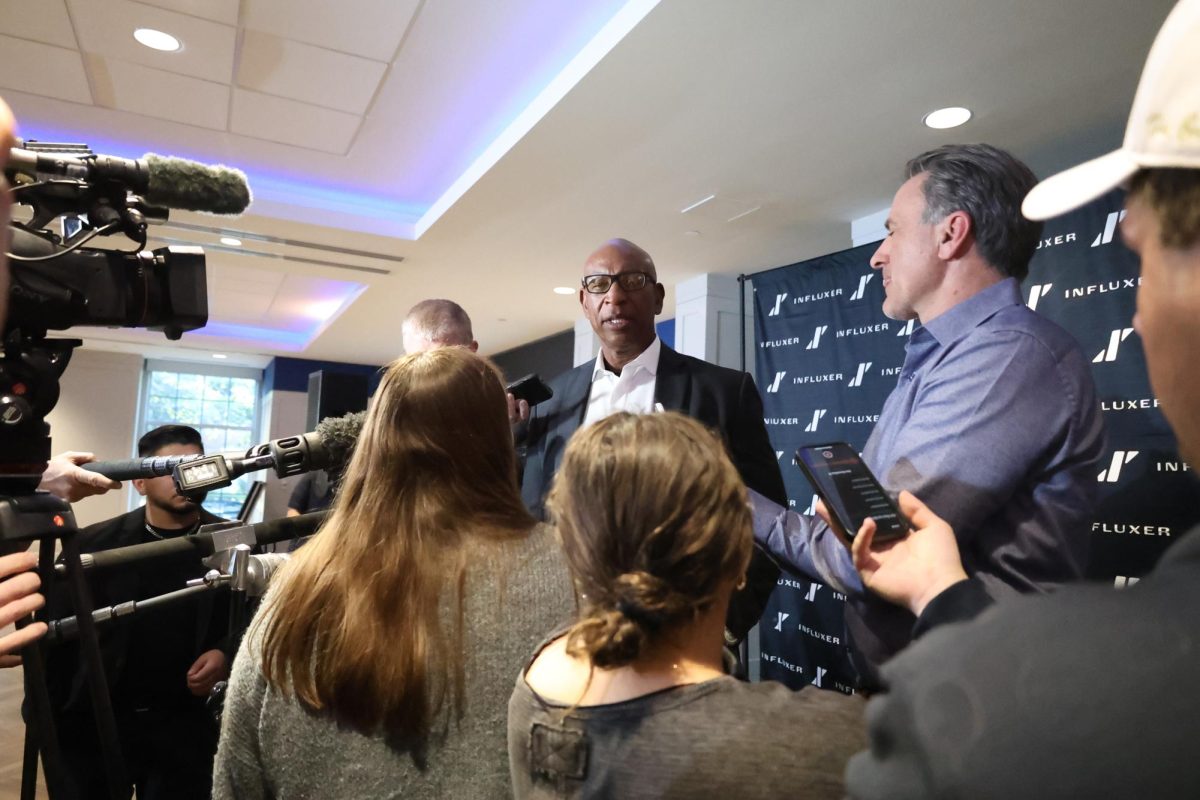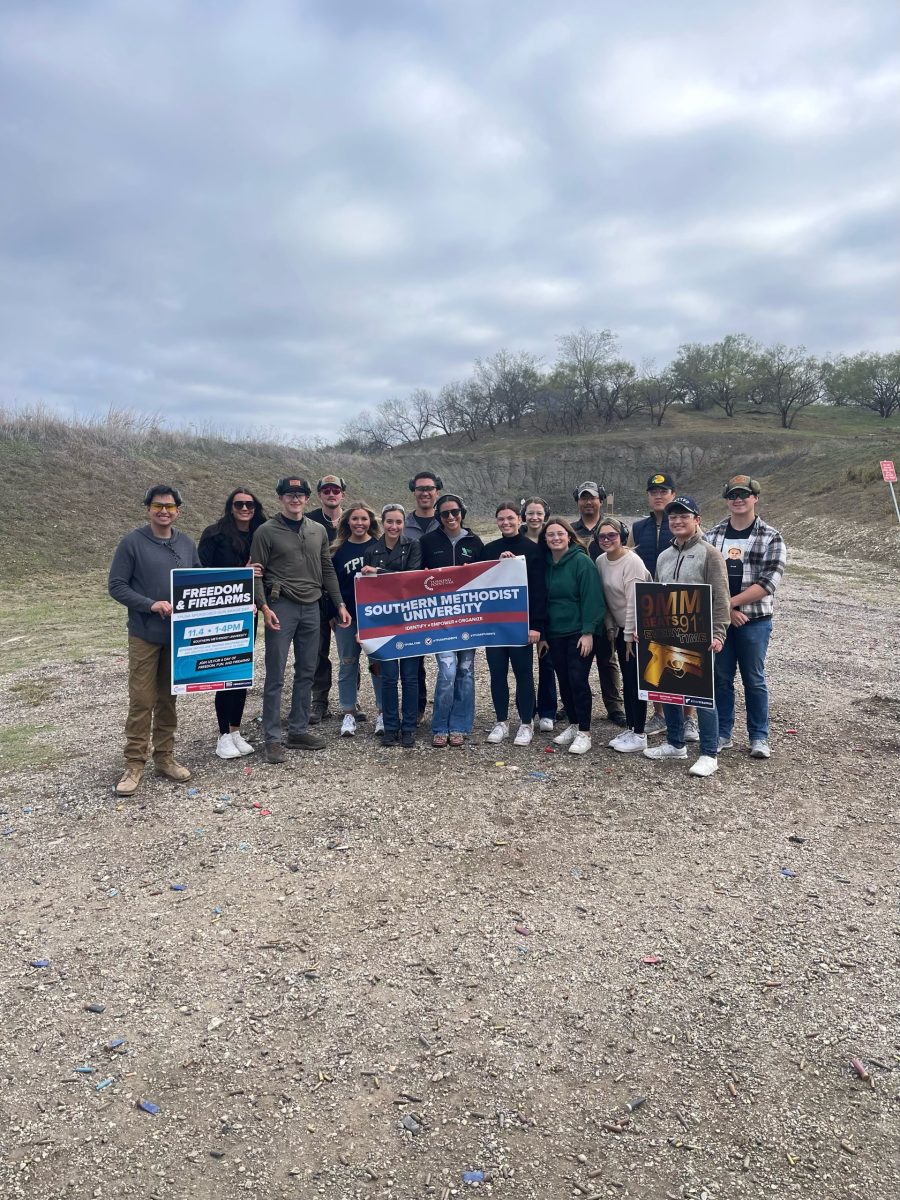Walking into the Hughes-Trigg Commons area on Tuesday, studentswere greeted with the outline of a dead body. Students who followedthe blue-tape arrows leading from the body became a witness to thegrim reality of war. Tables lined with pictures of war victims,young and old, gaunt, wounded and dying, met the eyes of studentswalking past.
The SMU chapter of Amnesty International sponsored”Victims of War: A Special Exhibit” in hopes of raisingthe social consciousness of the general student body.
Moumita Rahman, former president of the SMU Amnesty chapter,said, “We wanted to increase public awareness. We wanted tomake sure people don’t forget the suffering going on in theworld today due to armed conflicts. There are at least 35 armedconflicts occurring in the world right now.”
“People have to realize that death isn’t the onlyconsequence of war. Thousands of people die, are displaced, forcedto become refugees or just disappear,” Rahman said.
Current AI President Rachel Baal said, “Some students whostopped by were very unaware. They didn’t realize thatconflicts were happening all over the world. Most people just thinkthat the only conflict that’s happening is in Iraq anddon’t realize that people are fighting all over.”
A missing-persons display sat atop one of the tables.
People all over the world, presumed dead and their bodies neverfound, are a huge issue, Rahman said. “They’re everydaypeople who simply disappear. They’re presumed dead, but noone really knows,” she said.
Baal said, “Thousands of people go missing for standing upto their governments and expressing their opinions and beliefs. InSri Lanka, 50,000 people have gone missing since 1998, and 15percent of thentotal are children.”
Members held a petition aimed at the Democratic Republic ofCongo.
According to Amnesty International, “Over the past fiveyears, tens of thousands of children have been forced to fightalongside government armed forces and armed political groups in theDemocratic Republic of Congo.”
Rahman said, “The children are subjected to all kinds ofawful experiences. Guns are shot off repeatedly in their faces, sothe children won’t be scared in battle. Young girls areforced into sexual slavery.”
One 13-year-old girl, interviewed by AI, said, “[Somesoldiers] took us as wives straightaway. We had to cook for them.If a cow was killed, we had to cook it.
“When they came back, they would eat and drink, then theywould call for you. They were so many. It was so painful. … Ifyou refused, they used sticks to whip you.
“I wasn’t even the youngest. Some girls were evenyounger than me …”
According to AI, despite the signing of a peace agreement andthe formation of a new transitional government, the rate of childrecruitment is actually increasing in some areas of the country,and many armed political groups still actively recruitchildren.
According to a statement from the group’s chapter,”All parties to the [Democratic Republic of Congo] conflicthave recruited child soldiers. The children, some as young asseven, are used as porters or cooks but are also routinely sent tothe frontlines. They are given weapons and trained to use them tokill. Child soldiers suffer very high casualty rates on thefrontline because of their inexperience, recklessness and lack oftraining.
“They also suffer disproportionately from the rigors ofmilitary life and are particularly vulnerable to disease andmalnutrition.
“Some have reported that they were forced to commit grossabuses, including killing, torture and mutilation, against theenemy and even against their own families.”
A report issued in December 1995 by the United NationsInternational Children’s Emergency Fund (now called theChildren’s Emergency Fund), found that children have been themajor victims of war.
It reports that in the last decade, two million children havebeen killed in wars, between four and five million have beendisabled, 12 million made homeless and one million wereorphaned.
Students interested in joining the SMU chapter of AI can attendthe weekly meeting at 6:30 p.m. on Thursdays in the commuter loungein Hughes-Trigg.
Rahman quoted SMU the group’s adviser Rick Halperin,”The only failure in human rights is to not do anything atall.”








